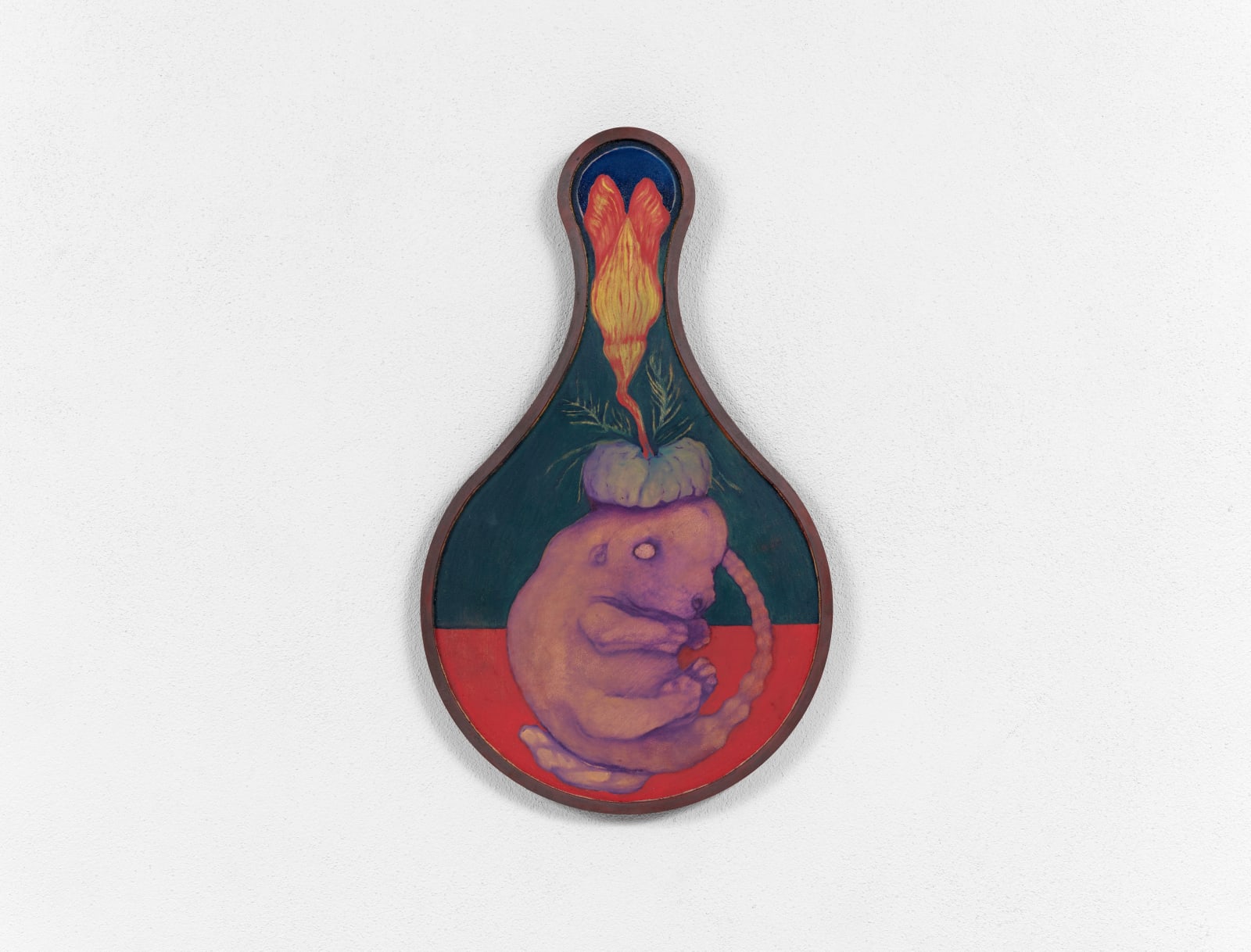Victor Bengtsson
Double Cylinder Homunculus, 2022
oil on wood
60 x 36 cm
23 5/8 x 14 1/8 in
23 5/8 x 14 1/8 in
This painting depicts a mouse embryo with a case of exencephaly, which is a rare malformation and neural defect with a lack of closure of the neural canal, causing a...
This painting depicts a mouse embryo with a case of exencephaly, which is a rare malformation and neural defect with a lack of closure of the neural canal, causing a large amount of brain tissue to protrude from the head. Most cases of foetuses with exencephaly are stillborn and in this painting, we can see the vegetal presence of a flower sprouting from the brain, about to bloom. As part of medical research, rare cases of malformation such as this one are often conserved in jars filled with formaldehyde, for further study and use in education. Bengtsson references this in the title of the painting and has described the subject as a ‘homunculus in a bottle’. In Mediaeval and early modern periods, this term was used to refer to a small humanlike being that was believed to be created through alchemy, with homunculus meaning ‘little man’ or ‘little person’ in Latin. They were believed to have the capacity to increase in size and become adult humans, while the term was also used by natural philosophers to describe a tiny person contained within an individual sperm. This explanation was used to describe the process of human development in the womb, yet it took several centuries for scientists to have an accurate understanding of what a foetus looks like at different stages and recognise that it did not resemble a fully grown specimen of the observed species.
